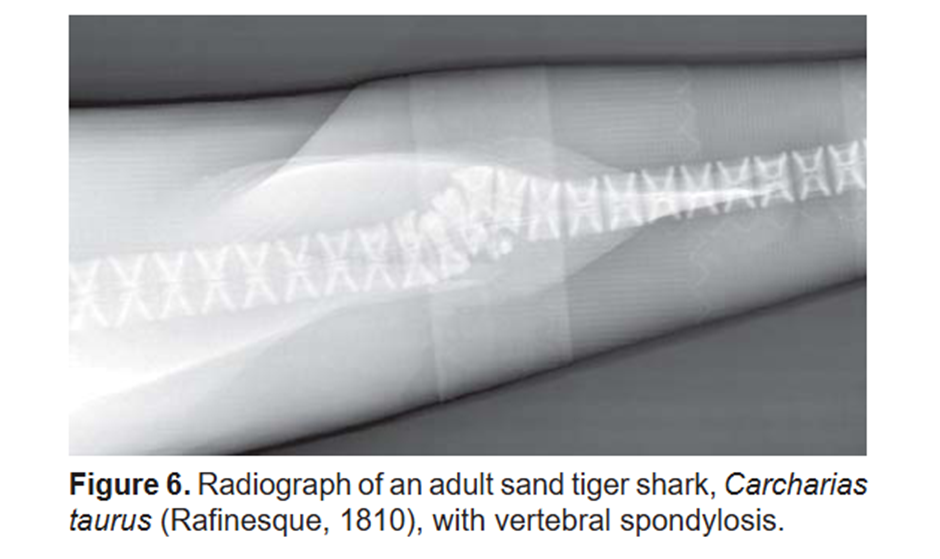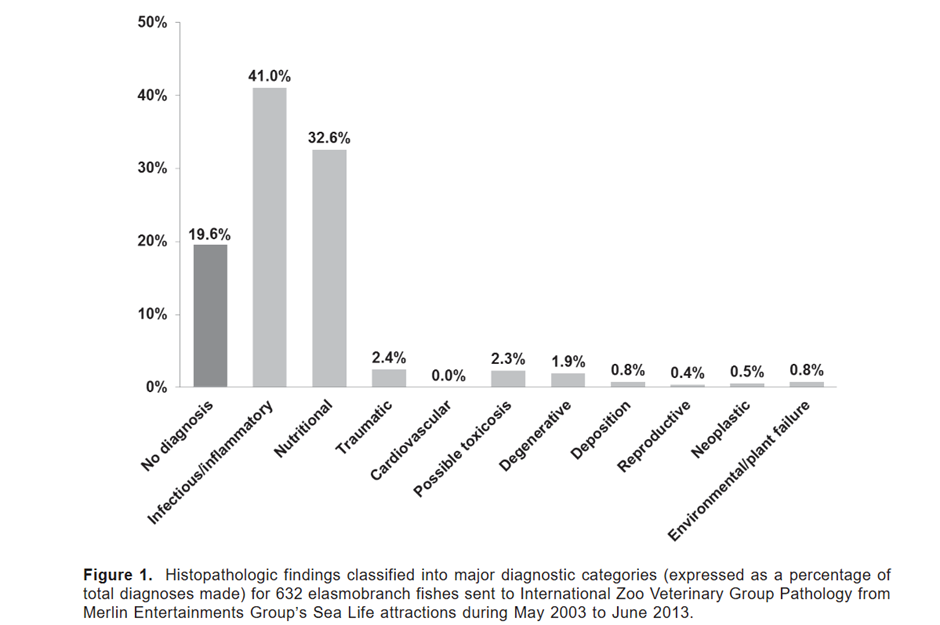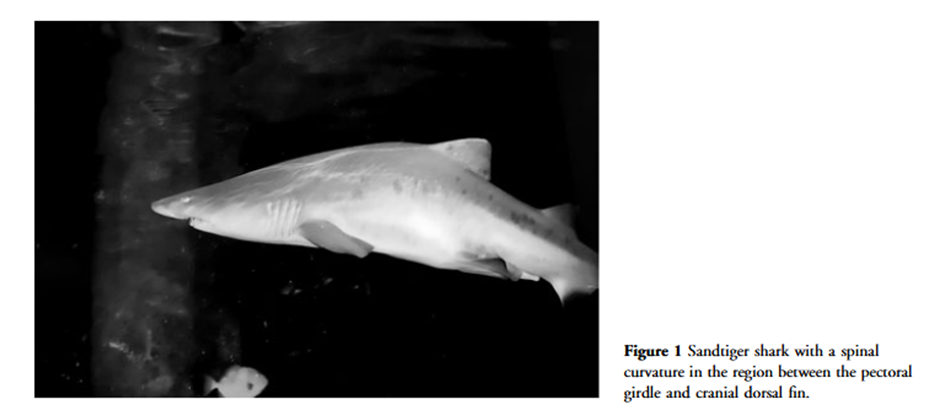Preventative Health
Keepers
Keepers are the frontline personnel responsible for directly monitoring but also the oversight of the equipment and preparing protocols. They should conduct daily health checks, concisely document behaviour, feeding schedule and water parameters for the review of the curator and vet, as well as integrating feedback to adjust care routines. As a result, they should have a thorough understanding of shark anatomy and behaviour and have the ability to distinguish symptoms and behaviour changes from outside the enclosure. Observations are conducted through out the day but primarily at feeding where behavior and the individuals condition can be seen closely i.e gill movement . STS should display a steady and relaxed swimming, they are the only shark known to gulp air for buoyancy therefore irregular floating or sinking may also indicate health issues, though bottom-lying behavior alone is not conclusive unless paired with unusual postures, balance and clear distress displayed as thrashing, pacing or moving in a circular motion.
Daily logs must cover behaviour changes in both aggression and social towards tank mates and feeding rate as they can describe mainly symptoms which are related to appetite . Injuries incurred to the body such as ocular lesions should require immediate attention, whereby individuals are led to the holding pool for inspection. Whilst minor wounds heal quickly and can be treated with disinfectants (AZA, 2004; Wyffels et al., 2024), any signs of infection should be referred to veterinarians. Data would then be process by the curator, they will oversee the protocol and data management which will be used to inform decision whilst being updated to their chosen recording keeping software (i.e ZIMS), a common practice for institutions involved in captive breeding.
STS require the water quality to be pristine, therefore keepers are responsible for testing Water parameters for the main tank once to twice a day with extra checks needed for indiviudals in qurantine. (Check Water parameters here).. This will also apply to water output as componets to the LSS suchas biofiltration requires stable temperature (10–35°C) and pH (7–8) to remain effective. Keepers would occasionally carry out weekly and biannual maintenance to ensure all functional Living support systems are functiong well with any faults reported to the curators. See Bregnballe (2015) for advanced system care. Depending on the tank, this may include diving into the tank to clear food debris to prevent spikes in ammoina which the necessary risk and health assessments will be determined by the curator, this generally will need at least two divers to provide support
Finally, they will also have the opportunity to carry out training procedures, this could range from station feeding to emergency removal in order for daily tasks as well as to reduce the stress incurred by the animal. Equipment used to transfer individuals will vary however, handling would require keepers to wear dedicated PPE and follow hygiene protocols (e.g., handwashing)which are essential as protective swim wear and sterile gloves to prevent harm to sharks whilst also preventing the transfer of pathogens.
Curators
Curators oversee enclosure design, water quality, and animal care protocols. This involve responding to environmental stressors outside of the keeper's control that could mitigate stress and providing oversight on current protocols referencing keeper logs to informing adjustments, espically when coordinating events such as breeding (Henningsen et al., 2017; Ryan et al., 2018).
STS require considerations if considering captive breeding as during mating seasons aggression increases (Claus et al,. 2021). Separation of sexes and juveniles can last for months, requiring curators to coordinate of both keepers and vets. This also includes providing quarantining water parameters in the qurantine are similar to the main tank but under separation that work independently to prevent contamination of the main tank, important for qurantining and treating wild caught individuals or providing temporary housing (i.e. maintaince). Due to their buoyancy mechanic, they may require extended periods of around 30–60 days longer to minimise stress and prevent mortality from shock (AZA, 2012).
Curators also monitor the aqaurium's compliance to policy that requiresthem to respond to emerging diseases in the area, using updates from regulatory bodies and decisions by the vets to inform protocol. This is covered under a range of legislation and policies that ensure support and allows the aquarium to continue to work under a license or support of external organisations which can provide support in welfare. For the UK and Europe this includes but is not limited to:
- Animal Welfare Act 2006
- Zoo Licensing Act 1981
- DEFRA Standards
- AZA Welfare Standards (if applicable)
- EAZA Welfare Standards
- Link to PDF's
This also includes composing risk and welfare assessments but also providing evidence for educational value which justifies the aquarium’s role in conservation.
Veterinarians
Veterinarians’ expert knowledge in animal anatomy and physiology are required to provide informed decisions on the animal’s welfare. They will mainly maintain the documentation of the treatment and monitor the zoonotic disease risk; commenting on the state of biosecurity measures and feeding schedules in order to minimise common risk factors that can cause infectious and non-infectious diseases (TABLE 1 & 2).
This includes the prescription of prophylactic and probiotics on arrival of wild-caught sharks and quarantine procedures. Wild sharks often carry copepods (e.g., Anthosoma crissum) which can lead to further oral complications if not addressed (Benz & Bullard, 2004). An examination of the gut is advised for damage from ingesting hooks.
A large majority of the examination will be formed from reviewing reports from the keepers as well as analysing faecal and blood samples through the use of a radioimmunoassay, with regular weight assessment to inform the individual’s health. This typically includes identifying nutrient deficiencies as well as monitoring chronic conditions, which is crucial in establishing baseline health profiles for diet and treatment benchmarking in scheduled or emergency conditions.
Vets are responsible for the administration of treatment and prescription including quarantine conditions. Despite the plethora of pathogens that can infect the environment, host-specific pathogens and certain treatments and conditions are well-documented e.g. praziquantel is a common and effective treatment for wild caught infected for parasites (AZA,2004; Chisholm & Whittington, 2002).
| Disease | Symptoms | Treatment | Reference |
|---|---|---|---|
| Spinal Deformities | Visible kinks or bends in spine, abnormal posture, swimming issues | No cure; correct nutrition, improve space and swimming conditions | AZA,(2012) |
| Buoyancy Disorders | Floating, sinking, drifting, uncoordinated movement | Stomach tubing, fasting, diet adjustment, stress reduction | (AZA,2012) |
| Tooth and Jaw Malformations | Jaw asymmetry, feeding difficulty, broken/misaligned teeth | Adjust diet, correct mineral balance, vet trimming/surgery if needed | Stoskopf (2010); AZA,(2012) |
| Nutritional Myopathy | Muscle weakness, reduced swimming, loss of condition | Supplement Vitamin E/Selenium, inject if needed, improve diet | Hoopes (2017); AZA,(2004) |
| Thiamine Deficiency | Tremors, erratic swimming, neurological signs, anorexia | Supplement Vitamin B1, diversify diet, reduce thiaminase intake | Hoopes (2017); NRC (2011) |
| Chronic Stress Syndrome | Lethargy, loss of appetite, weight loss, poor immune response | Improve water quality, reduce handling/stressors, provide shelter | AZA (2004); Stoskopf (2010) |
| Metabolic Bone Disease | Jaw or spine deformities, stunted growth, abnormal cartilage | Correct Ca:P ratio, add Vitamin D3, review diet and lighting | AZA (2004); NRC (2011) |
| Gastric Overdistension (Bloat) | Swollen abdomen, buoyancy loss, reduced feeding, lethargy | Decompression via tubing, fast 24–72 hrs, monitor carefully | Stoskopf (2010) |
| Environmental Abrasions | Skin scrapes, white patches, open wounds, secondary infections | Improve surfaces, isolate injured sharks, treat with antiseptics | AZA (2004) |
| Fatty Liver Disease | Distended belly, lethargy, appetite loss, poor condition | Reduce dietary fat, increase exercise, smaller/frequent meals | AZA (2004); Stoskopf (2010) |
| Goiter | Swelling at posterior jaw | Iodine supplementation | Murray (2009) |
| Obesity | Excess body mass | Body condition monitoring, diet control | AZA (2004) |
| Egg-Retention Metritis | Anorexia, swelling, abscesses | Uterine lavage, antibiotics | AZA (2004) |
| Stress Myopathy | Weakness, collapse | Reduce handling stress | AZA,(2004); Stoskopf (2010) |
| Disease Type | Symptoms | Treatment |
|---|---|---|
| Bacterial | Wounds, ulcers, abrasions | Qurantine indiviudal and antibiotics |
| Fungal | Environmental stress-related skin issues; swelling but can infect deep tissue | Qurantine and Environment improvement, |
| Monogeneans | Gills, buccal cavity but can be found internally. Thorough examination by vet is recommended | Freshwater bath, praziquantel, formalin. (Consult Vet)/td> |
| Leeches | found on skinand gills can lead to secondary bacterial infections and osmotic imbalance | Mechanical removal |
| Branchiura (Lice) | Found Skin, buccal captvity and gills leading to imbalance and infection | Freshwater Bath |




